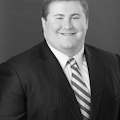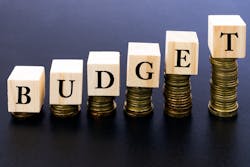Spending hangover? 3 steps to create a budget
The longer days and flexible schedules for children during the summer can mean trips, home projects, family get-togethers, purchases of recreational equipment, and many of the other expenses. Early fall can bring back-to-school expenditures, including tuition payments. Unfortunately, the aftermath of these spending bursts can be stressful for doctors, dampening feelings of good times when feeling the financial hangover.
Done the right away, a budget can allow a doctor to allocate resources toward living and having fun in a guilt-free way. So, how do you get started? Follow the steps below to begin the process toward identifying the right budget for you.
Gain an accurate gauge of spending
Based on our internal record-keeping, the average doctor spends approximately $16,294 per month. However, when we poll the average doctor, this spending figure is underestimated by approximately $4,000. To actually gain an understanding of how much is spent on a monthly basis, use a combination of your personal checkbook and end-of-the-year credit card statements for personal credit cards to identify personal spending. While most retail expenses can be tracked using a credit card, a checkbook is important to track things like property taxes, insurance payments, and other expenses that typically must be drafted directly from checking accounts, as opposed to being paid for by a credit card.
Organize personal spending
After identifying all expenditures, organize those expenses by category. Most end-of-the-year credit card statements or expense-tracking programs, such as Personal Capital or Mint, automatically compile these items categorically, meaning that most of your work is done for you. However, expenses from the check register need to be considered as well to gain a full scope of total expenses. If you plan an increase in any category over the next few years, consider increasing the line item in the budget to reflect this and create a realistic budget that you can follow.
Identify areas for reduction
This can be the most difficult part of creating a budget. Have a realistic conversation with your spouse, significant other, or other financial decision-makers in the home to identify areas that can be reduced with little to no pain. For instance, are you surprised to see that you spend $1,000 per month dining out? A conversation about making a commitment to dining at home and reducing your take-out frequency recently saved this author nearly $350 per month. Are you a part of subscription services that seemed like a good idea at the time, but now add up to hundreds of dollars per month? Use this opportunity to cancel services in which you are no longer interested. Are insurance expenses spiraling out of control? Secure quotes for alternative coverages, and put providers on notice that you will not stand idly by while premiums increase for no reason. While this is the most uncomfortable part about the budget creating process, it is the most important. It requires you and the other decision-makers in your home to become very honest with each other and yourselves about the spending in your life that matters, and the spending that you may do without.
Redirect savings
After moving forward with this progress, doctors will generate a tremendous amount of momentum toward their financial goals. Don’t stop at cutting expenses! Expenses that are cut and not redirected toward savings typically are spent elsewhere. Identify the areas that you can painlessly reduce, and work to shift those expenses to savings on a pretax basis, if doing so makes sense in your situation. Do this to maximize the pretax effect of the income that you save.
If a doctor can identify $2,500 per month in expenses that can be reduced, and that doctor pays taxes at a top marginal rate of 40% between state and federal income taxes, this will create a savings capacity for $4,167 per month if this income is saved on a pretax basis. If that doctor can redirect this savings to a profit-sharing plan, cash-balance retirement plan, or some other pretax savings vehicle, the additional savings would allow that doctor to accumulate an additional $686,135 toward retirement goals over a 10-year period at a 6% rate of return.
ANDREW TUCKER, JD, CFP, CPA, CIMA and JOHN K. McGILL, JD, MBA, CPA, provide tax and business planning for dentists and specialists. Mr. McGill publishes The McGill Advisory newsletter through John K. McGill & Company Inc., a member of The McGill & Hill Group LLC, a one-stop resource for tax and business planning, practice transition services, legal advice, retirement plan administration, CPA services, and investment advisory services. Visit mcgillhillgroup.com.
About the Author

John K. McGill, JD, MBA, CPA
JOHN K. McGILL, JD, MBA, CPA, provides tax and business planning for dentists and specialists. The McGill Advisory newsletter is published through John K. McGill & Company Inc., an affiliate of the McGill & Hill Group LLC. It is your one-stop resource for tax and business planning, practice transitions, legal, retirement plan administration, CPA, and investment advisory services. Visit mcgillhillgroup.com or call (877) 306-9780.

Andrew Tucker, JD, CFP, CPA, CIMA
Andrew Tucker, JD, CFP, CPA, CIMA, provides tax and business planning for dentists and specialists. The McGill Advisory newsletter is published through John K. McGill & Company Inc., an affiliate of the McGill & Hill Group LLC. It is your one-stop resource for tax and business planning, practice transitions, legal, retirement plan administration, CPA, and investment advisory services. Visit mcgillhillgroup.com or call (877) 306-9780.
